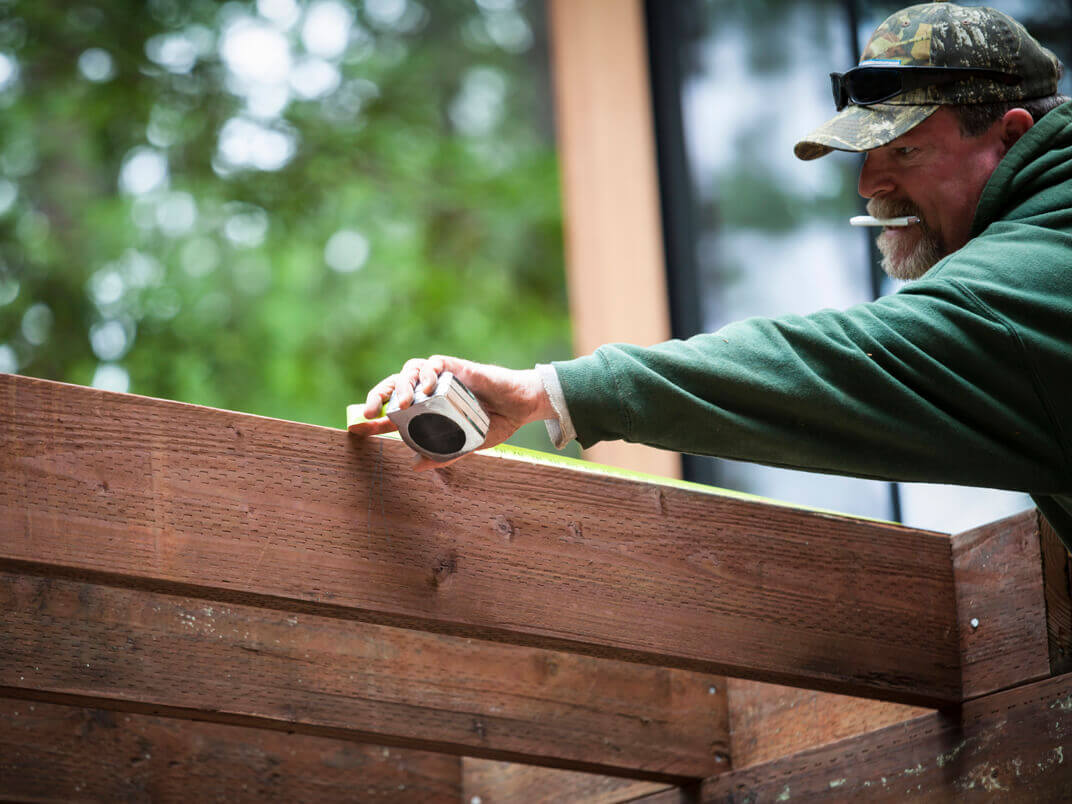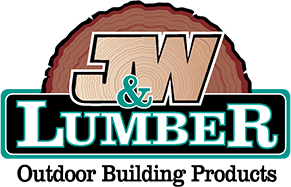
The great outdoors can be a harsh place for wood. Any structure that you build outside of your home – be it a fence, deck, awning or a treehouse – will face constant exposure to the elements. Sun, wind, rain, snow and insects can quickly deteriorate and decay wood – and your outdoor structure. That’s why you should consider utilizing pressure-treated lumber – and compatible hardware – for portions of your outdoor construction.
What Is Pressure-Treated Lumber?
Most woods are susceptible to decay when four conditions are present: high moisture, favorable temperatures, exposure to oxygen and the presence of wood fiber (which is a food source for insects). Pressure-treating wood through a process that infuses a chemical preservative into the wood removes and mitigates these conditions, allowing the wood to last for decades
Wood is pressure-treated by placing raw lumber into an air-tight vacuum, which is then filled with preservative fluid and pressurized to force the fluid deep into the wood. Often, the wood is incised to increase the penetration and retention of the treatment fluid. It’s a fascinating process, which you can learn more about in this pressure-treated wood video:
Pressure-treated lumber is available in different levels of “strength” – measured in pounds of treatment per cubic foot (LBS/CU FT). Dependent on where the wood will be used, different standards – called the Use Category System (UCS) – apply. Generally, any wood to be used above ground should have a .25 retention level, wood that will have contact with the ground (fence posts, etc.) should have a .40 retention level, while wood to be used in marine environments (docks, etc.) should have a .60 retention level.
What About Hardware?
While the old adage that “opposites attract” is true for some couples (and all magnets), pairing treated wood with untreated metal hardware can have disastrous consequences. Over the last 10-15 years, almost all pressure-treated lumber has been preserved with Alkaline Copper Quaternary (ACQ). The switch was made from Chromated Copper Arsenate (which contains arsenic) to ACQ in an effort to protect the environment and public health. And while ACQ has succeeded in this effort, it has created a new complication: ACQ is a far more corrosive substance, which can be a big problem for fastener hardware.
Any metal fastening hardware (screws, etc.) must also be “treated” when used with pressure-treated lumber. The process, of course, is different. But it’s incredibly important. Failure to use the right hardware with pressure-treated wood will make your construction susceptible to erosion and even failure.
The most effective hardware for use with pressure-treated lumber are fasteners that have been galvanized via “hot-dipping.” This process coats steel and other metal fasteners with a layer of zinc that prevents them from corroding when touching the ACQ chemicals present in the wood. While there are various methods for galvanizing hardware, J&W Lumber recommends products that utilize hot-dipping (Simpson and Fast Master products are great options), as the process creates a metallurgical bond between the zinc and the metal.
The Lesson
Your outdoor construction can provide you with a lifetime of good times and great memories – BBQs on your deck with family and friends, the joy of watching your kids play in their treehouse, the fence that keeps your nosy neighbors out, and your loyal dog in. But you have to “treat” your outdoor building materials right. If you do, you’ll experience a lifetime of loyalty.
To learn more about how to create the perfect outdoor project using the perfect materials, contact our outdoor building experts.
